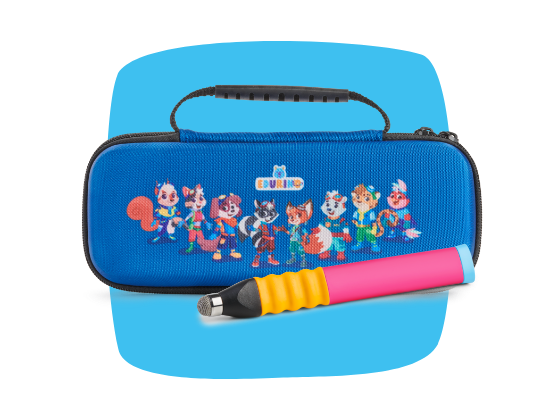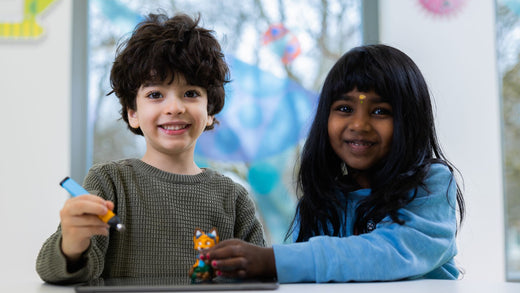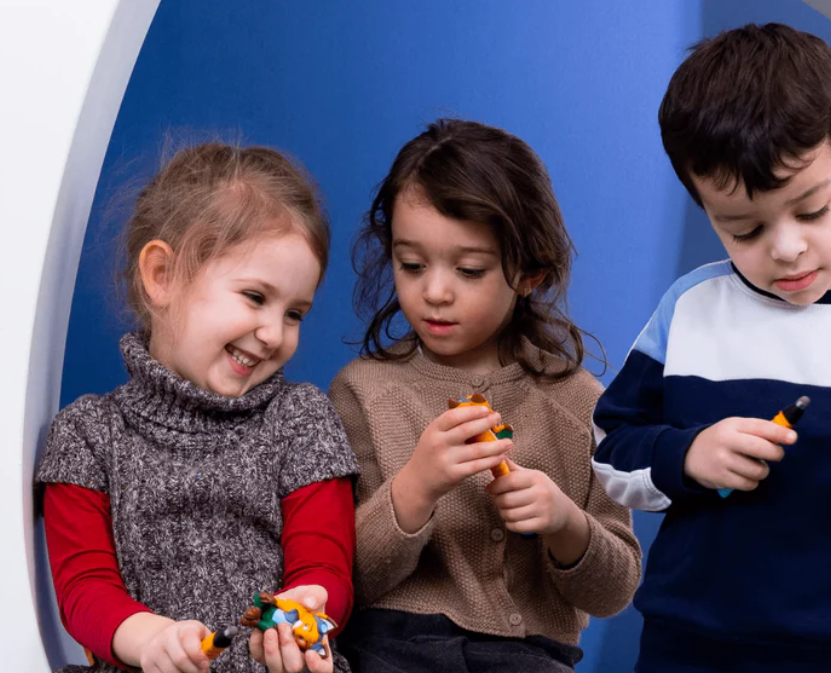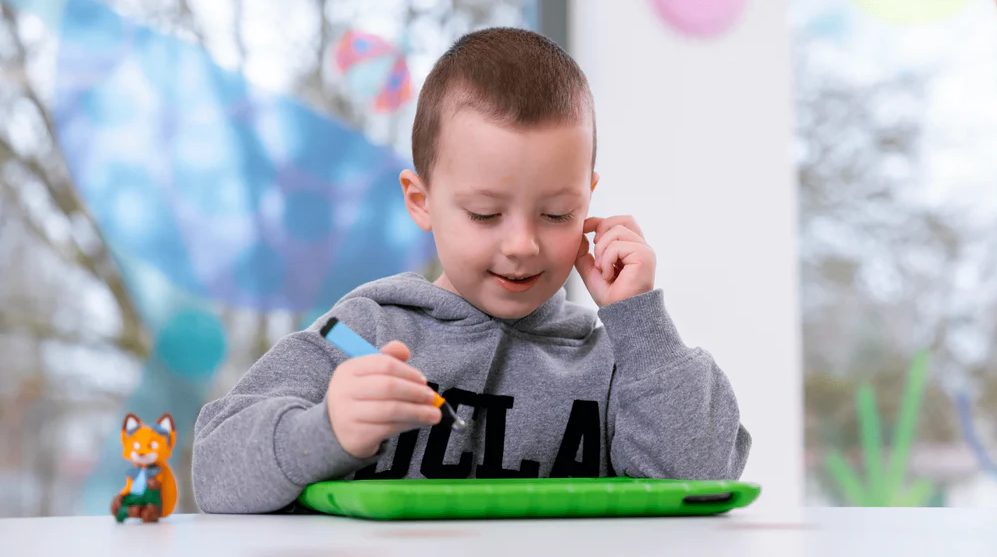Promote self-motivation: Maintain curiosity and support interest
An important question is how parents can motivate their children, especially when they encounter difficulties with learning. As parents, it's not always possible to understand why a child suddenly becomes so interested in soccer or wants to know if horses sleep. In any case, it's important to show genuine interest when your child is passionate about a subject. This will naturally motivate them to learn without pressure to perform or evaluation. A motivated child demonstrates greater commitment to learning and achieves better results.
In technical terms, this motivation is called “intrinsic,” which is in contrast to “extrinsic” motivation.
-
Intrinsic motivation: Learning from enthusiasm and interest in a subject
-
Extrinsic motivation: Learning through external incentives (e.g. good grades)
Typically, these two types of motivation go hand in hand, but when extrinsic motivation predominates, children's natural curiosity is undermined. This isn't a big problem at kindergarten age, but once a child starts school, persistent extrinsic motivation can lead to them losing interest in learning. Rewards can lead to addiction and undermine intrinsic motivation, especially if they are announced in advance or if children are already intrinsically motivated.
Introduction to motivating children
Children's motivation is a crucial factor in their development and success at school and in life. All parents want to support their children successfully and encourage appropriate learning motivation. Motivated children learn better, are more independent, and achieve more success. Various factors influence children's motivation, including parents, school, and the learning environment. In this article, we will examine the various aspects of children's motivation and offer valuable tips on how parents and teachers can encourage their children's learning motivation. We will address the importance of intrinsic motivation, the role of parents, creating a pleasant learning environment, and encouraging independence. These tips are not just theoretical; they can also be implemented practically in everyday family life.
Basics of motivation
Motivation is a key factor in children's learning and development. It can be fostered by various factors such as interest, enjoyment, and recognition. Parents and teachers play a crucial role here. A positive learning environment in which children feel comfortable and motivated to learn new things is essential. An important aspect of this is fostering children's self-confidence and self-efficacy. When children can develop and pursue their own goals and interests, this strengthens their motivation and drive. Parents should therefore ensure that they support their children's individual interests and give them the opportunity to pursue their own paths.
1. The role of parents in learning
Parents play a central role in their children's learning and motivation. They can support their children by helping them set and achieve realistic goals. Positive feedback and praise are crucial for building children's self-confidence and motivation. It's important that parents don't pressure their children, but rather give them space to develop their own interests and talents. A good example is when parents encourage their children to pursue a favorite sport or hobby. This not only promotes concentration and perseverance but also shows children that their interests are valued.
Parents should also work on implementing changes gradually to improve their relationship with their children. One important role of parents is to help their children overcome challenges and develop their own skills. The importance of positive challenges and tackling difficult tasks step by step promotes children's self-confidence.
2. Creating a pleasant learning atmosphere
A pleasant learning atmosphere is essential to motivating children to learn. A quiet and comfortable learning space can work wonders. It's important that children feel comfortable and have the opportunity to explore their own interests and topics. One example of this is when children have their own corner at school or at home where they can do their homework or read. This personalized learning environment fosters a desire to learn and helps children concentrate better and enjoy completing their tasks.
However, motivating children to learn can be a real challenge. It's important to adopt a positive perspective on this challenge to encourage children's engagement. Parents can use everyday activities to interact with their children and motivate them. For example, cooking together in the kitchen can be a great way to discuss school-related topics. This demonstrates that everyday activities can take a backseat while fostering the child's motivation remains the primary focus.
3. Motivation killers and boosters
There are various factors that can influence children's motivation. The most common motivation killers are pressure, criticism, and inauthentic rewards. If children feel like they are constantly under pressure or are not honestly recognized for their efforts, this can significantly reduce their motivation to learn. On the other hand, factors such as recognition, praise, and support can significantly boost motivation. Parents and teachers should therefore pay attention to creating a positive and supportive learning environment. It is important to encourage children to make their own mistakes and learn from them instead of criticizing or punishing them. Honest praise and recognition of their efforts can work wonders and increase children's enthusiasm for learning.
4. Dealing with failures
Failures are an inevitable part of the learning process and provide valuable opportunities to improve children's skills and strategies. Parents and teachers should encourage children to view failures as opportunities to learn rather than mistakes. It is important to support children when they experience failure and help them develop strategies to achieve their goals. Dealing with failure positively can boost children's motivation and self-confidence. Parents should show their children that every mistake is an opportunity to learn something new and develop further. With patience and support, children can learn to overcome setbacks and pursue their goals with perseverance and courage.
5. Promoting independence in learning
Promoting independence in learning is another important aspect of motivating children. Children should be able to set their own goals and achieve them independently. Parents and teachers can support children by helping them develop their own interests and talents. Setting goals and recognizing progress are crucial for developing intrinsic motivation. It is also important that children have the opportunity to make their own mistakes and learn from them. This promotes perseverance and patience. A good example is when children undertake a project where they can develop their own ideas and solutions. Such activities help children develop their skills and talents and build their self-confidence.
Learning basic skills like reading, writing, and arithmetic can be viewed as a craft that must be developed through targeted practice and training. With these tips and approaches, parents and teachers can sustainably foster children's motivation and help them achieve their learning goals with joy and success.
Checklist: How to motivate your child to learn
- Promote your child's intrinsic motivation: Pure interest and enthusiasm for a subject are ideal prerequisites for learning.
- Respect your child's individuality: Proper praise promotes their talents.
- Bonding is more important than performance: Allow your child to make mistakes and thus strengthen their self-confidence.
- Be a good role model: Children imitate their parents.
- Take the “why” seriously: Offer your child simple explanations of why we learn.
Find out here how EDURINO supports your child in learning in an individual and playful way.









